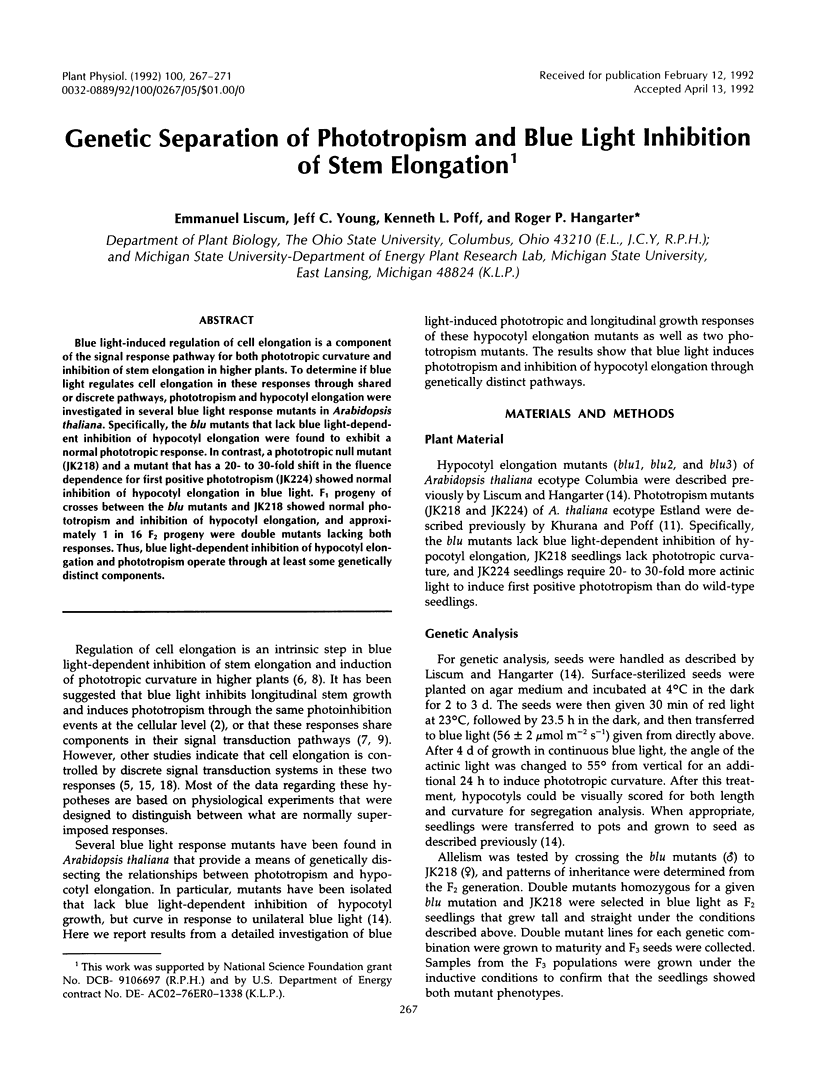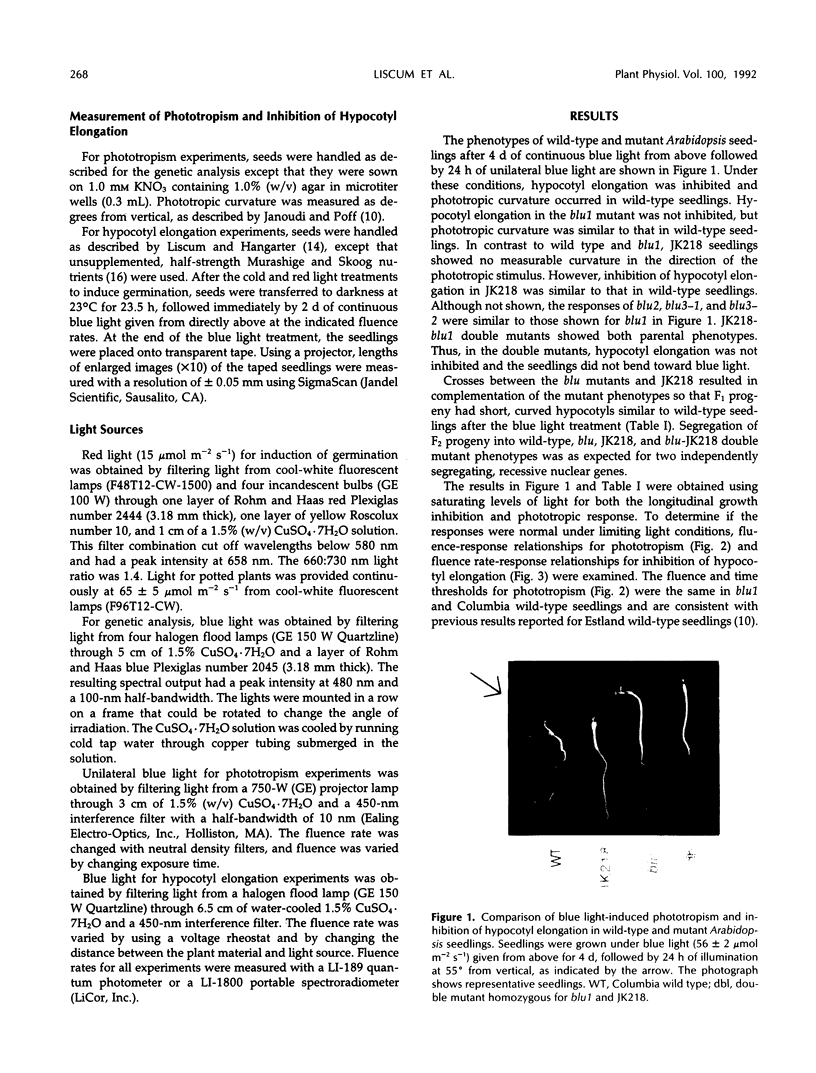Abstract
Blue light-induced regulation of cell elongation is a component of the signal response pathway for both phototropic curvature and inhibition of stem elongation in higher plants. To determine if blue light regulates cell elongation in these responses through shared or discrete pathways, phototropism and hypocotyl elongation were investigated in several blue light response mutants in Arabidopsis thaliana. Specifically, the blu mutants that lack blue light-dependent inhibition of hypocotyl elongation were found to exhibit a normal phototropic response. In contrast, a phototropic null mutant (JK218) and a mutant that has a 20- to 30-fold shift in the fluence dependence for first positive phototropism (JK224) showed normal inhibition of hypocotyl elongation in blue light. F1 progeny of crosses between the blu mutants and JK218 showed normal phototropism and inhibition of hypocotyl elongation, and approximately 1 in 16 F2 progeny were double mutants lacking both responses. Thus, blue light-dependent inhibition of hypocotyl elongation and phototropism operate through at least some genetically distinct components.
Full text
PDF




Images in this article
Selected References
These references are in PubMed. This may not be the complete list of references from this article.
- Cosgrove D. J. Kinetic separation of phototropism from blue-light inhibition of stem elongation. Photochem Photobiol. 1985;42(6):745–751. doi: 10.1111/j.1751-1097.1985.tb01642.x. [DOI] [PubMed] [Google Scholar]
- Cosgrove D. J. Rapid Suppression of Growth by Blue Light: OCCURRENCE, TIME COURSE, AND GENERAL CHARACTERISTICS. Plant Physiol. 1981 Mar;67(3):584–590. doi: 10.1104/pp.67.3.584. [DOI] [PMC free article] [PubMed] [Google Scholar]
- Elliott W. M., Shen-Miller J. Similarity in dose responses, action spectra and red light responses between phototropism and photoinhibition of growth. Photochem Photobiol. 1976 Mar;23(3):195–199. doi: 10.1111/j.1751-1097.1976.tb07241.x. [DOI] [PubMed] [Google Scholar]
- Janoudi A., Poff K. L. A common fluence threshold for first positive and second positive phototropism in Arabidopsis thaliana. Plant Physiol. 1990;94:1605–1608. doi: 10.1104/pp.94.4.1605. [DOI] [PMC free article] [PubMed] [Google Scholar]
- Khurana J. P., Poff K. L. Mutants of Arabidopsis thaliana with altered phototropism. Planta. 1989;178:400–406. [PubMed] [Google Scholar]
- Konjevic R., Khurana J. P., Poff K. L. Analysis of multiple photoreceptor pigments for phototropism in a mutant of Arabidopsis thaliana. Photochem Photobiol. 1992 May;55(5):789–792. [PubMed] [Google Scholar]
- Laskowski M. J., Briggs W. R. Regulation of pea epicotyl elongation by blue light : fluence-response relationships and growth distribution. Plant Physiol. 1989 Jan;89(1):293–298. doi: 10.1104/pp.89.1.293. [DOI] [PMC free article] [PubMed] [Google Scholar]
- Liscum E., Hangarter R. P. Arabidopsis Mutants Lacking Blue Light-Dependent Inhibition of Hypocotyl Elongation. Plant Cell. 1991 Jul;3(7):685–694. doi: 10.1105/tpc.3.7.685. [DOI] [PMC free article] [PubMed] [Google Scholar]
- Orbovic V., Poff K. L. Kinetics for phototropic curvature by etiolated seedlings of Arabidopsis thaliana. Plant Physiol. 1991;97:1470–1475. doi: 10.1104/pp.97.4.1470. [DOI] [PMC free article] [PubMed] [Google Scholar]



